AC Power Generation System Components
Alternating current (AC) power generation is a complicated process that requires a number of important components working together to transfer energy from diverse sources into electricity. This section goes into the critical components of an AC power generation system, such as the generator, prime mover, control system, cooling system, and voltage regulator.
Generator
The generator is the fundamental component of every power-generating system; it converts mechanical energy into electrical energy. In alternating current generators, or alternators, a coil is positioned in a stationary magnetic field and rotates clockwise because of external mechanical torque. Most power plants employ a turbine to power the generator. The turbine uses a fluid, such as steam or water, to propel blades along the rotor shaft.
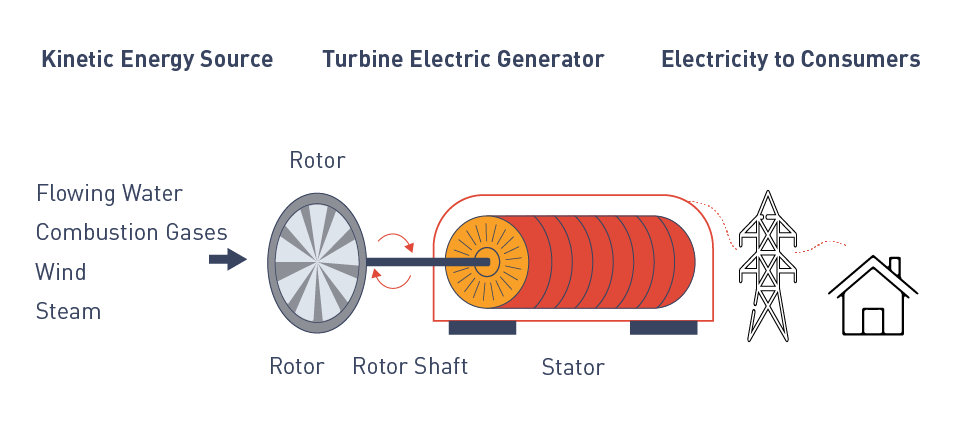
Figure 6: Power generation from turbine
As the coil spins, it cuts through the magnetic field, altering the flux linkage and generating an electromotive force (emf) in the coil. The direction of the induced emf can be calculated using Fleming's right-hand rule. When the coil is attached to an external load resistor, current passes through both the coil and the external load. Ohm's law (V = IR) measures the voltage across the load.
The generator's design, which includes the rotor (the rotating element) and the stator (the stationary part), is crucial to defining the system's efficiency, output capacity, and electrical characteristics. Generators must be sturdy enough to endure the mechanical strains and electrical demands of continuous operation.

Figure 7: Generator concept
Prime Mover
The prime mover provides mechanical energy to the generator. It can refer to any source of mechanical power, such as steam turbines in thermal power plants, water turbines in hydroelectric plants, gas turbines in natural gas plants, or internal combustion engines in diesel generators. The choice of prime mover depends on the available energy source and the specific needs of the power generation system, such as speed, efficiency, and power capacity.
Control System
The control system governs the functioning of the power generation system, ensuring that energy is produced safely, efficiently, and reliably. It oversees the start-up and shutdown operations, evaluates system performance, and adjusts the operational parameters in reaction to changes in demand or operating conditions. Modern control systems use advanced algorithms and automation technologies to maximize power generation, coordinate with the grid, and safeguard the system from failures or abnormal events.
Cooling System
Electrical and mechanical losses in power generation systems produce considerable amounts of heat. To protect the generator and other components, the cooling system dissipates the heat. Various cooling methods are utilized, including air cooling, water cooling, and hydrogen cooling, each chosen according on the generator's size, design, and operational needs. Effective cooling is required to preserve the efficiency and the lifespan of the power generating system.
Voltage Regulator
An AC generator's output voltage fluctuates according on the output load and power factor. A voltage regulator keeps the generator's output voltage at a fixed level, guaranteeing continuous power quality despite variations in load or operational conditions. It regulates the excitation current provided to the generator's rotor, hence managing the magnetic field intensity and, as a result, the induced voltage. Voltage regulators are crucial for grid stability because they allow generators to adapt dynamically to variations in demand while also integrating seamlessly with other power-generating sources.
Types of Power Generation Systems
Fossil Fuel Power Plants: Use coal, natural gas, or oil to create electricity. These plants use fossil fuels to generate steam, which powers turbines attached to generators. While they provide great reliability and capacity, their environmental effect, which includes greenhouse gas emissions and resource depletion, presents significant problems.
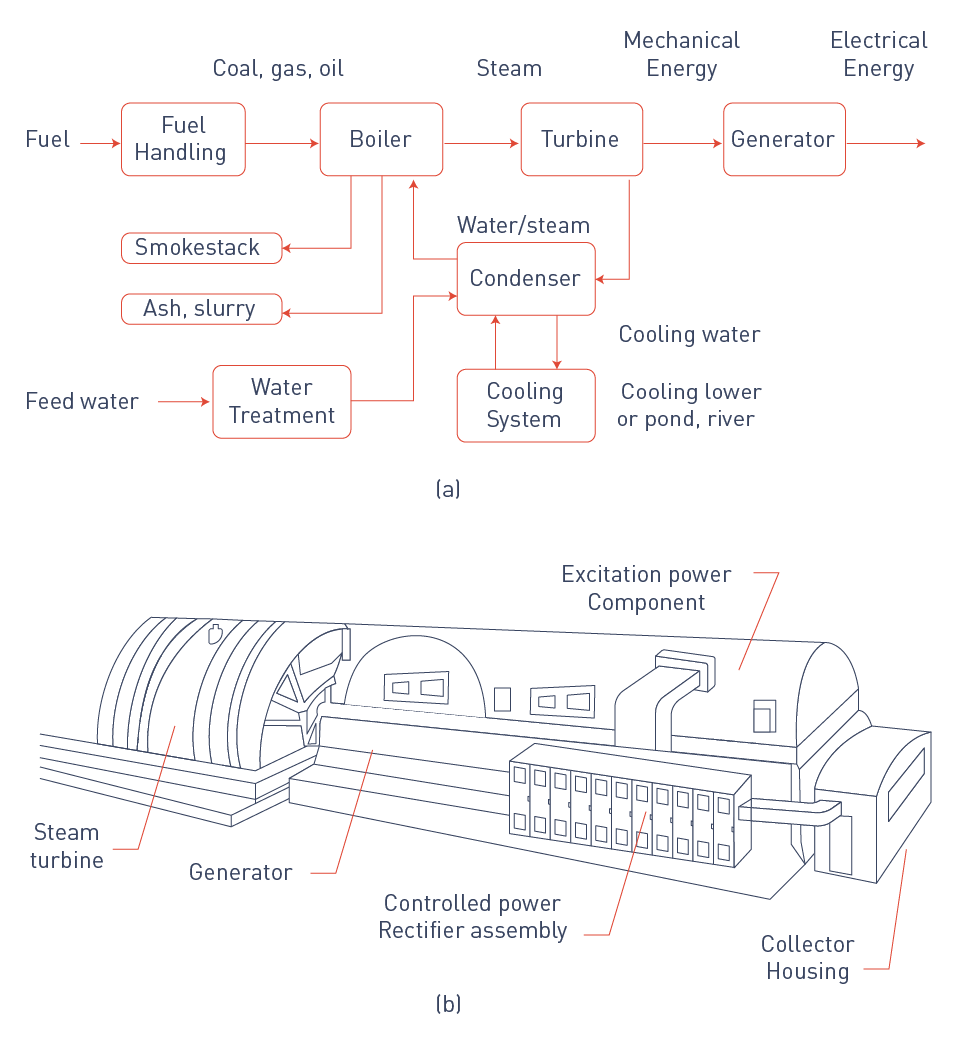
Figure 8: Primary components of a fossil fuel power plant: system block diagram and common configuration of turbine/generator system.
Nuclear Power Plants: Produce electricity via nuclear fission reactions. Nuclear power plants can provide substantial amounts of continuous, base-load power with low greenhouse gas emissions. However, issues about radioactive waste disposal, safety, and expensive capital costs are significant drawbacks.
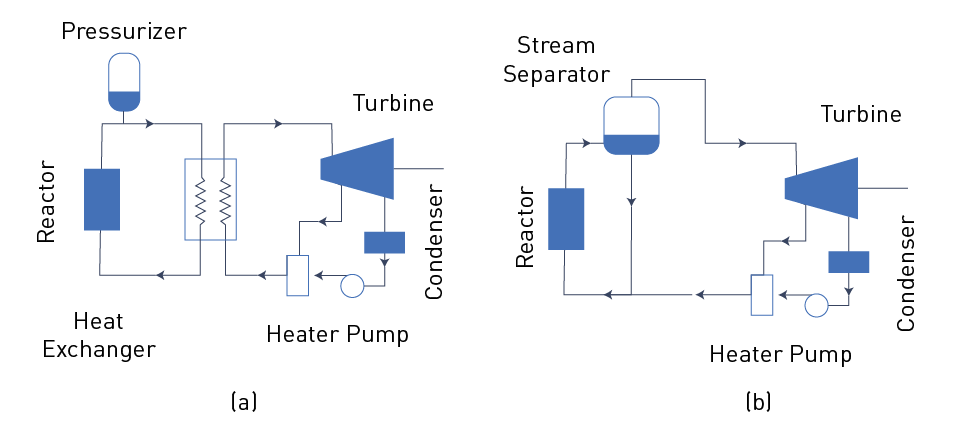
Figure 9: Types of nuclear power plants: (a) pressurized water reactor; (b) boiling-water reactor.
Hydroelectric Power Plants: Convert the kinetic energy of flowing or falling water to electricity. Hydro plants can be large-scale, with massive dams and reservoirs, or small-scale, as in run-of-the-river installations. They are appreciated for their renewable nature, low operational costs, and capacity to offer both base-load (the lowest amount of energy demand necessary during a certain time period) and peaking power (time of high demand).
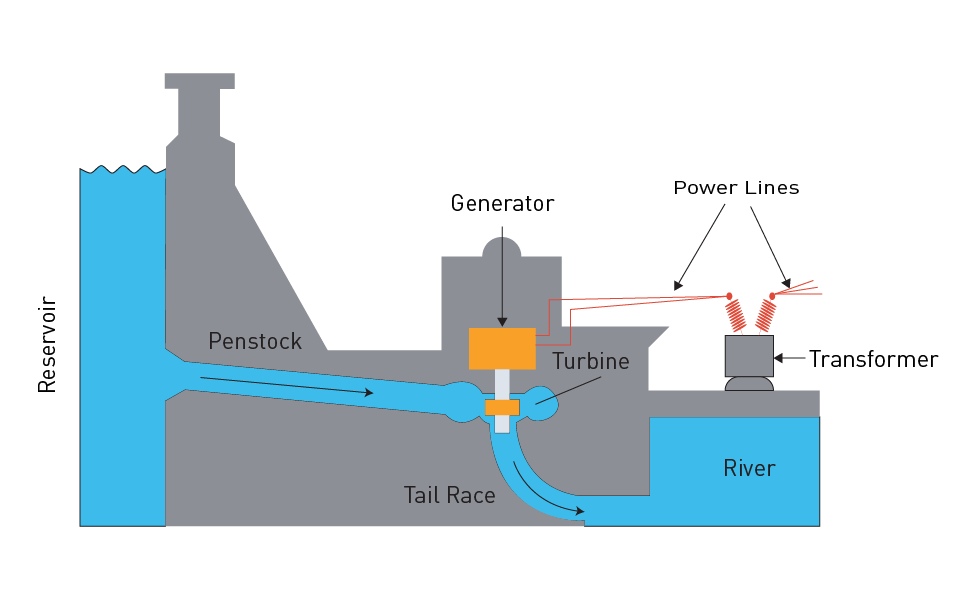
Figure 10: Hydroelectric power
Wind Farms: Multiple wind turbines convert wind energy into electricity. Wind power is clean, renewable, and becoming more cost-competitive, yet it is susceptible to fluctuation and site-specific restrictions.

Figure 11: Power from off-shore wind farm
Solar Power Systems: Include photovoltaic (PV) panels and concentrated solar power (CSP) plants, which directly convert sunlight into energy. Solar power's popularity stems from its renewable nature and scalability, ranging from modest rooftop installations to big utility-scale facilities. However, like wind, its production varies with weather conditions.
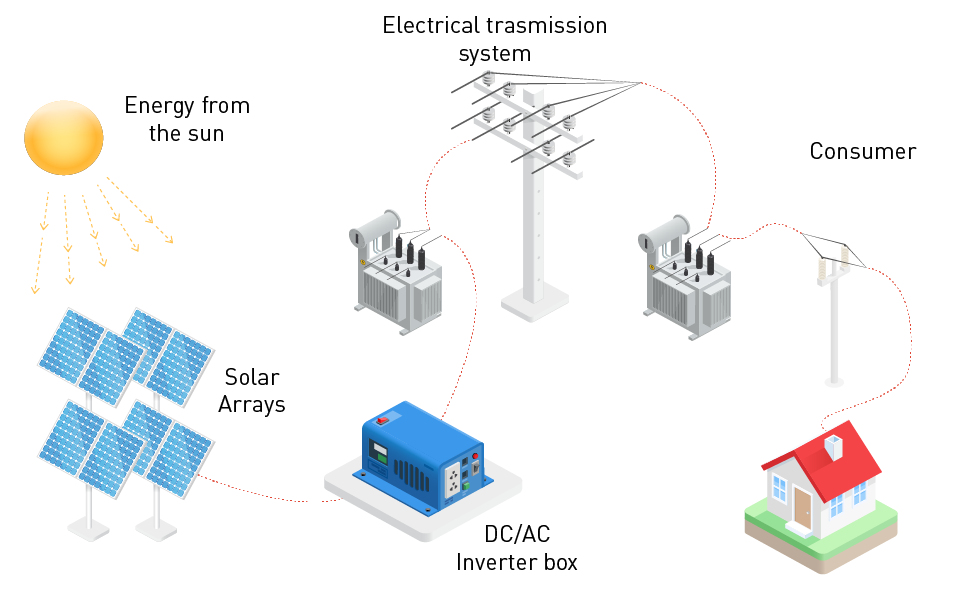
Figure 12: Power from solar farm
Geothermal Power Plants: Use heat from the earth's interior to produce electricity. These systems can supply reliable, base-load electricity with a low environmental impact, but their availability is restricted by geography.
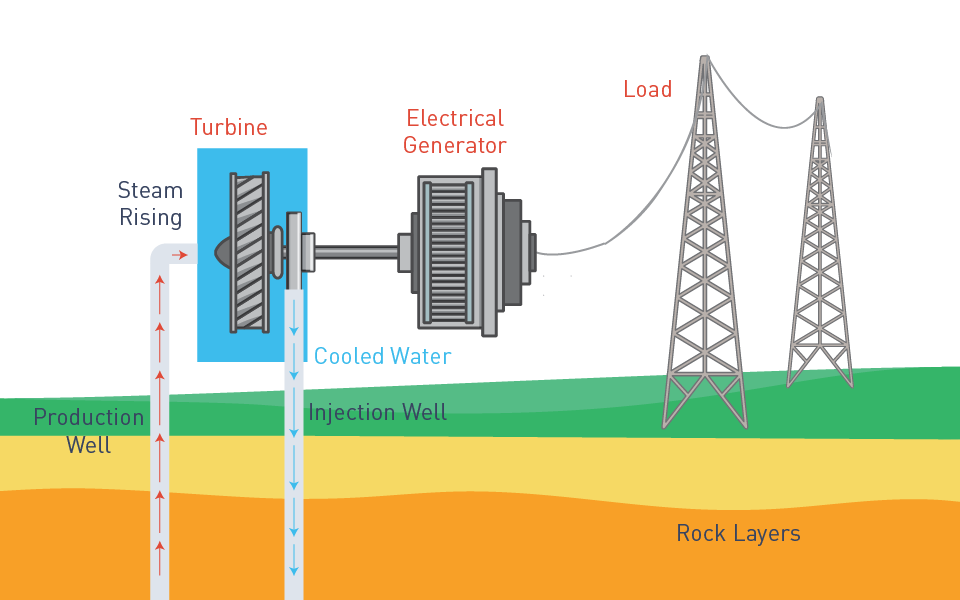
Figure 13: Dry steam geothermal power
Biomass and Biogas Plants: Convert organic materials into electricity using combustion or anaerobic digestion. While biomass energy is considered renewable, its long-term viability is dependent on resource management and can have variable environmental implications.
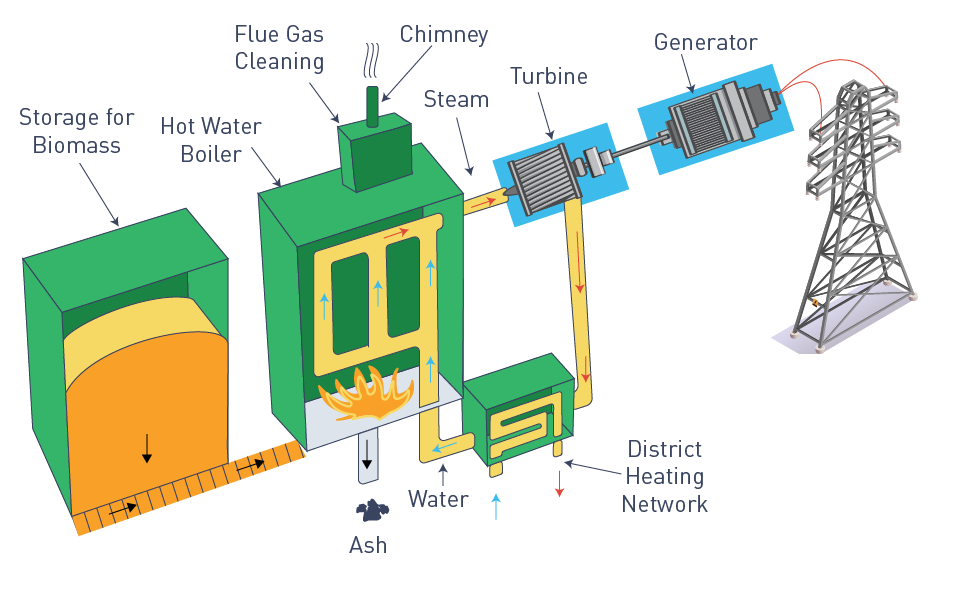
Figure 14: Biomass power plant
Integration into the Grid
Integrating these many power producing sources into the electrical grid necessitates extensive planning and coordination. Balancing the grid entails balancing supply and demand in real time, incorporating the intermittent nature of renewable sources, and guaranteeing the stability and reliability of electricity transmission. Advances in grid management technology, such as smart grid systems and demand response strategies, as well as advances in energy storage, are critical for integrating a greater share of variable renewable energy sources onto the grid.
Environmental and Economic Considerations
Environmental and economic issues increasingly impact the selection of power generating systems. The worldwide push for sustainability and carbon neutrality is pushing investment in renewable energy sources and technologies that minimize the environmental effect of power generation. Meanwhile, economic considerations such as fuel pricing, capital investment, operational and maintenance charges, and regulatory regulations all play important roles in deciding the mix of power production systems in a grid.

直接登录
创建新帐号